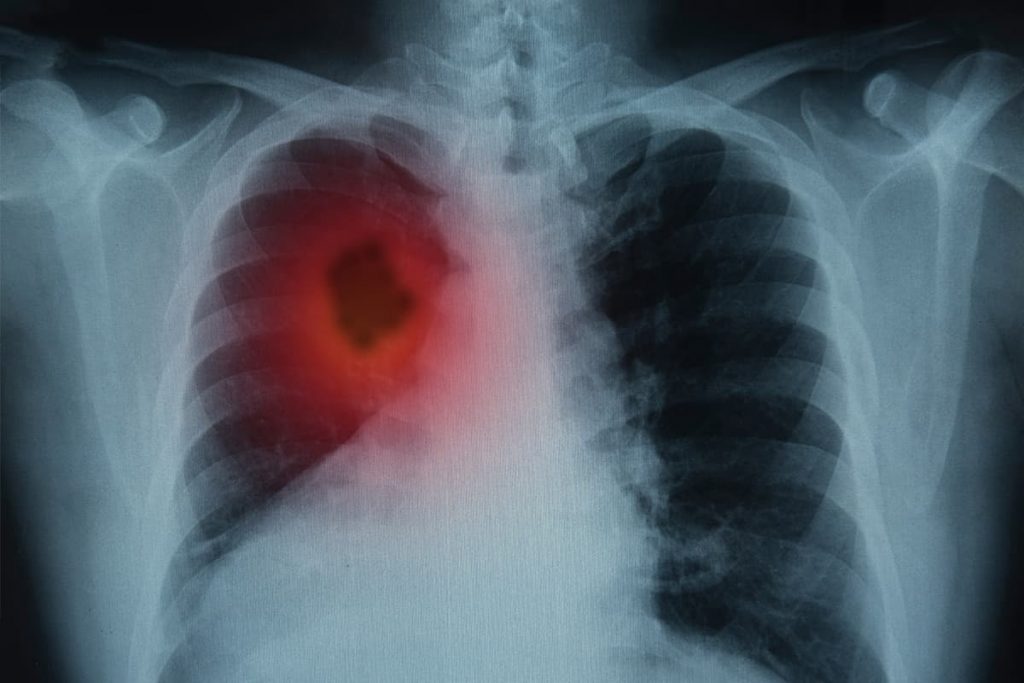Cancer diagnosis usually begins with a visit to a local physician for a checkup. The patient may be feeling unwell or perhaps noticed a growth in an area, such as the breast, which they feel should be checked out. Of course there are many reasons why certain symptoms are experienced, cancer being just one possibility. Investigation by a medical professional is the best course of action.
When it comes to cancer, doctors will use a variety of different diagnostic procedures, from the traditional physical exam to laboratory tests and biopsies. Imaging tests such as x-rays and CT scans are routinely used during cancer diagnosis and play a crucial role specifically in the diagnosis of lung cancer.
DIAGNOSING LUNG CANCER
Lung cancer is the most common cause of cancer death overall in the world with 1.76 million deaths each year.
It’s the most common cancer in men and the third most prevalent in women.
While it is often directly associated with smoking, 10-20% of individuals who develop the disease have never smoked before.
In the early stages of lung cancer, there may be few if any signs to suggest that something is wrong. This often leads to late diagnosis.
The most common symptoms include a persistent cough that lasts for more than a couple of weeks, chest infections that keep recurring, as well as fatigue and loss of appetite.
X-RAYS FOR DIAGNOSING LUNG CANCER
A physician will generally look to rule out other potential causes, such as a lung infection, before recommending further diagnostic investigation. If lung cancer is suspected, the first step is often a visit to the hospital to have an x-ray, where a developed tumour will most likely show up as a gray mass.
An x-ray is a non-invasive and fairly quick imaging process. X-ray machines pass a small amount of radiation through the body, which is then collected on the other side and turned into an image. The radiation is absorbed at varying rates throughout the body and will show solid objects such as bone as white or gray against a black background.

An x-ray showing an abnormality in the lung
It is most routinely employed when a patient has suspected broken bones but is also useful for examining organs, such as the lungs, to identify problems such as pneumonia and cancer. If a tumour is present and of a certain size, it will show up as a white/gray object that normally wouldn’t be present in a healthy lung.
The patient doesn’t need to do anything such as avoid food or drink before having an x-ray if the lungs are being checked. The process can be carried out either while standing or lying on a special table. The x-ray takes just a few seconds and there should be no after-effects once the process is finished.
An x-ray is initially interpreted by a healthcare professional, known as a radiologist, who will have expertise in spotting abnormalities and different stages of cancer. Much will depend on the size of the tumour. A nodule, for example, could be quite small and may easily be missed by someone without expertise. Similarly, if the cancer is at a very early stage it might not show up on the x-ray at all.
It should be pointed out that having an x-ray is just one initial part of a lung cancer diagnosis. While a shape might show up on the image and indicate that something is wrong, it does not definitively show that there is cancer present.
A full diagnosis can only be achieved using further investigative approaches, such as a CT scan and a biopsy (where a sample of the tissue is physically taken and examined clinically). An x-ray that shows a gray mass may be a cancer tumour, but it could also be something else such as an abscess which has formed following an infection.
Even with the best expertise, x-rays can also be misinterpreted. According to research, 90% of the errors in lung cancer diagnosis occur when an x-ray is employed. For this reason, further tests such as the CT scan will give a more detailed image of any potential area that might have cancer. A biopsy will be used to ascertain whether it is malignant or benign and help define the correct course of cancer treatment going forward.
The time between having an X-ray and when the patient will receive the results depends on health service used, but normally takes between one and two weeks. Of course, this can be an extremely worrying time to wait for an individual who has suspected lung cancer, but it is an important first stage regularly used in the overall diagnostic process.









